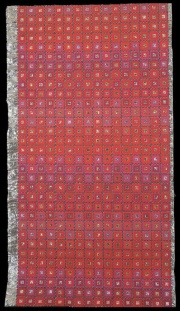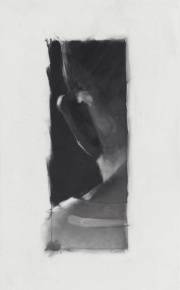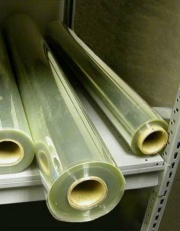Mylar
Description
[DuPont Teijin Films, Hopewell, VA] A registered trademark for a series of optically clear, colorless, thermoplastic polyester films. First introduced in the early 1950s, Mylar® is composed of polyethylene terephthalate. It is a biaxially oriented film that is chemically inert and dimensionally stable. Mylar is an effective barrier to moisture, oil and grease. It has been used for lamination, coating, embossing, printing, and dyeing. Mylar has been also used for heat seal packaging. Mylar® type D sheets are uncoated and have been used for enclosing photographs and coins as well as for making photocorners.
Note: Mylar® type D sheets were discontinued September 2001 by DuPont.
Synonyms and Related Terms
PET; Mylar [Du Pont]; Hostaphan [Mitsubishi]; Claryl [Toray]; 3M Polyester [3M]; Questar {Filmquest]; polyesterr; polyethylene terephthalate; tereftalato de polietileno (Esp.)
Similar products: Melinex type 516
Personal Risks
- Difficult to ignite.
- Burns with a shiny, yellow-orange, sooty flame. Self-extinguishing.
- Polymer Plastics: [Safety Data Sheets]
Physical and Chemical Properties
- Resistant to cold acids, weak alkalis, bleach and most organic solvents. Degrades in strong alkalis, strong hot acids, cresol.
- For a 1 mil film: Oxygen transmission = 19-32 ml/m2d; Water vapor transmission = 45-60 g/m2d;
| Melting Point | 250-260 C |
|---|---|
| Density | 1.38 g/ml |
| Refractive Index | 1.54, 1.72 |
Resources and Citations
- DuPont Teijin: [Films Database]
- Rachael Perkins Arenstein, Lisa Goldberg, and Eugenie Milroy, ‘Support and Rehousing for Collection Storage’ In ‘Preventive Conservation: Collection Storage’ Lisa Elkin and Christopher A. Norris (eds.), Society for the Preservation of Natural History Collections, New York. 2019.
- G.S.Brady, Materials Handbook, McGraw-Hill Book Co., New York, 1971 Comment: p. 625
- Marjorie Shelley, The Care and Handling of Art Objects, The Metropolitan Museum, New York, 1987
- Caring for your Collections, Arthur W Schulz (ed.), Harry N. Abrams, Inc. , New York, 1992
- Pam Hatchfield, Pollutants in the Museum Environment, Archetype Press, London, 2002
- Marjory L. Joseph, Introductory Textile Science, Holt, Rinehart and Winston, Fort Worth, TX, 1986
- Identification of Textile Materials, The Textile Institute, Manchester, England, 1985
- Wikipedia: http://en.wikipedia.org/wiki/Mylar (Accessed Sept. 10, 2005)
- Teri Hensick, contributed information, 1998


